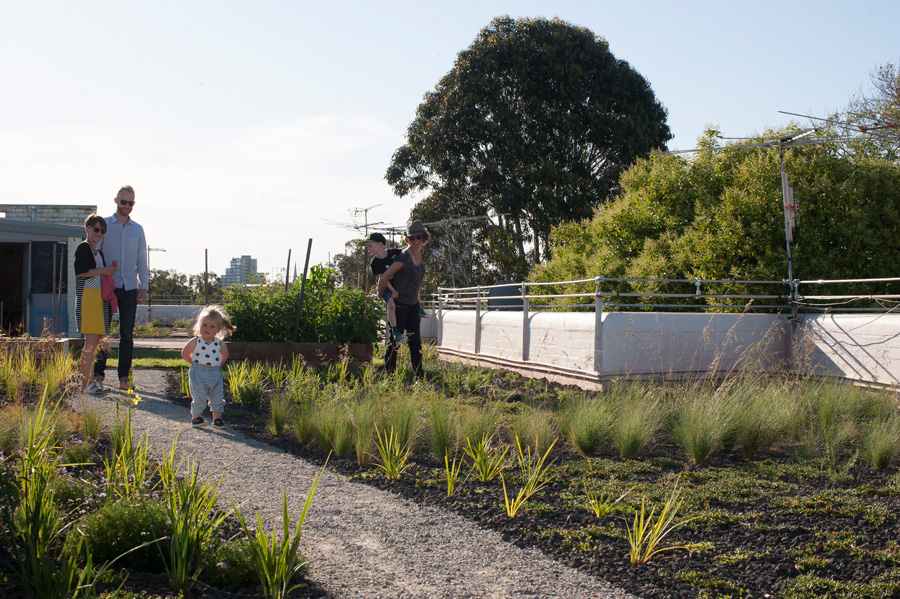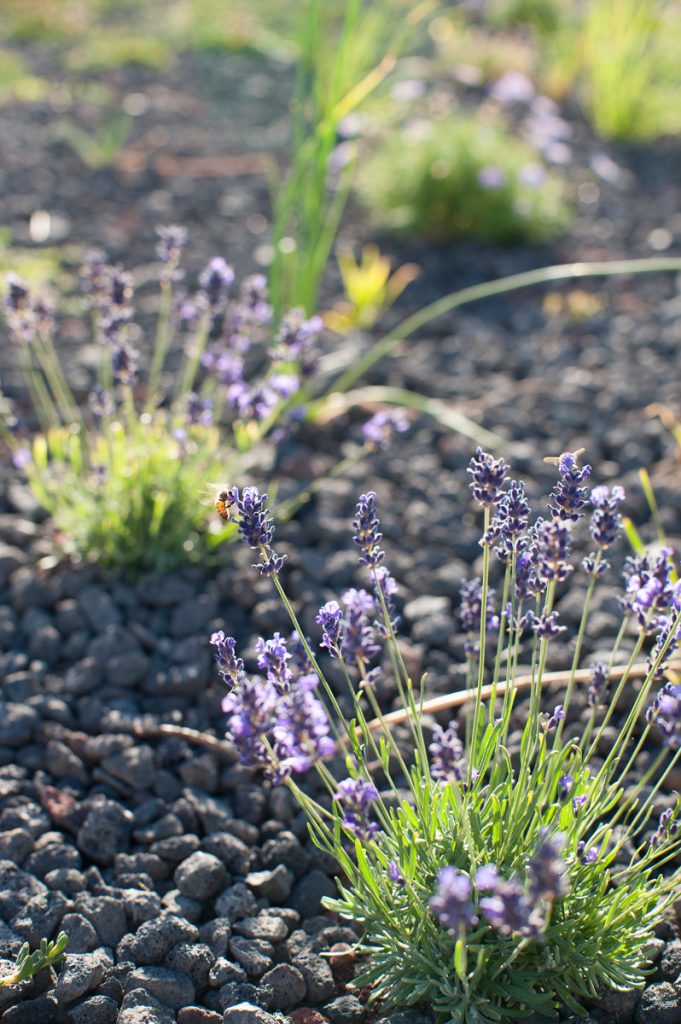Rocking Rooftop
There’s a meadow growing on the roof of a 1950s apartment block in East St Kilda, and it’s changing the lives of the residents.
Two years ago, this rooftop was a concrete wasteland. Now it’s a veritable oasis, with a mostly native meadow that draws people up to unwind.
The benefits of green roofs are manifold: they reduce stormwater run-off; they improve run-off water quality; they provide insulation, absorb sound and dust pollution; they provide access to green space; and they improve air quality.
“We call it our upstairs backyard. It’s made a big difference to my mindset about how you cope with a young family living in an apartment,” says Sonia Bednar, chair of the Green Roof Committee that drove the project.
Any thoughts of moving to the suburbs are on the backburner for resident Eleanor Voterakis, an art teacher and mother of eighteenmonth- old Sophie. “We’ve finally got that outdoor space,” she says, pulling out a weed as we meander through the garden.
The idea was conceived when Sonia’s partner, Bart Bee, visited a house with a green roof near Daylesford and asked, “Why can’t we do that?” Sonia used her skills as a film line producer to apply for a $200,000 Victorian State Government grant, and drew on the talents of a passionate team of residents including architect Stuart Swann, who had the skills to map out the space, Jake Smallman, a graphic designer who, with Troy Dean, a website developer, mocked up the website page, and Eleanor, who used her teaching background to explore how the garden could be an educational resource. “The paperwork was like doing a PhD,” Sonia jokes.
With the grant in hand, there was a nervous wait for the structural engineer’s report, which would dictate how deep the soil could be, how much load the roof could bear, and whether the work was actually feasible.
“Thankfully, approval came through, with the proviso the design be low-load bearing, which dictated a meadow of indigenous grasses and two grassed lawns,” Sonia says. And decks had to be placed over two apartments where a green roof couldn’t be built for structural reasons.
Body corporates can be difficult to convince, and a few owners who were not occupiers raised concerns about unanticipated future costs. However, most residents were just grateful for the grant. 14 of the 23 apartments are owner-occupied. The botanist on the project, Erik van Zuilekom, designed the meadow to have a self-sustaining ecosystem. He said some plants will naturally die off and others will self-seed, allowing new plant patterns to emerge. When recently visiting the garden, he was happy to see that small native bees were pollinating the flowers.
Sonia’s five-year-old son Marlo and his kindergarten class will be visiting for a picnic to learn how the green roof was built. Sonia and Eleanor are keen to share the project with the community, and hope it will inspire other projects.
“It really comes to life around sunset when people come up to water their vegies and bring in the washing,” Sonia says. It’s wonderful for the children too. On the lawn a baby pool is set up when it’s hot, and the children play with library toys on the deck.
The garden was installed within a week, and the reaction from residents, who didn’t know what to expect, was ecstatic. “A pair of sisters who rent in the block came up to have a look and screamed with delight,” Sonia says. “They couldn’t believe it. They were beside themselves with happiness and joy.”
It’s proved to be a wonderfully natural way for residents to come together, including their canine companions. “A few people have dogs. There are two best buddies now that come up here to play.”










